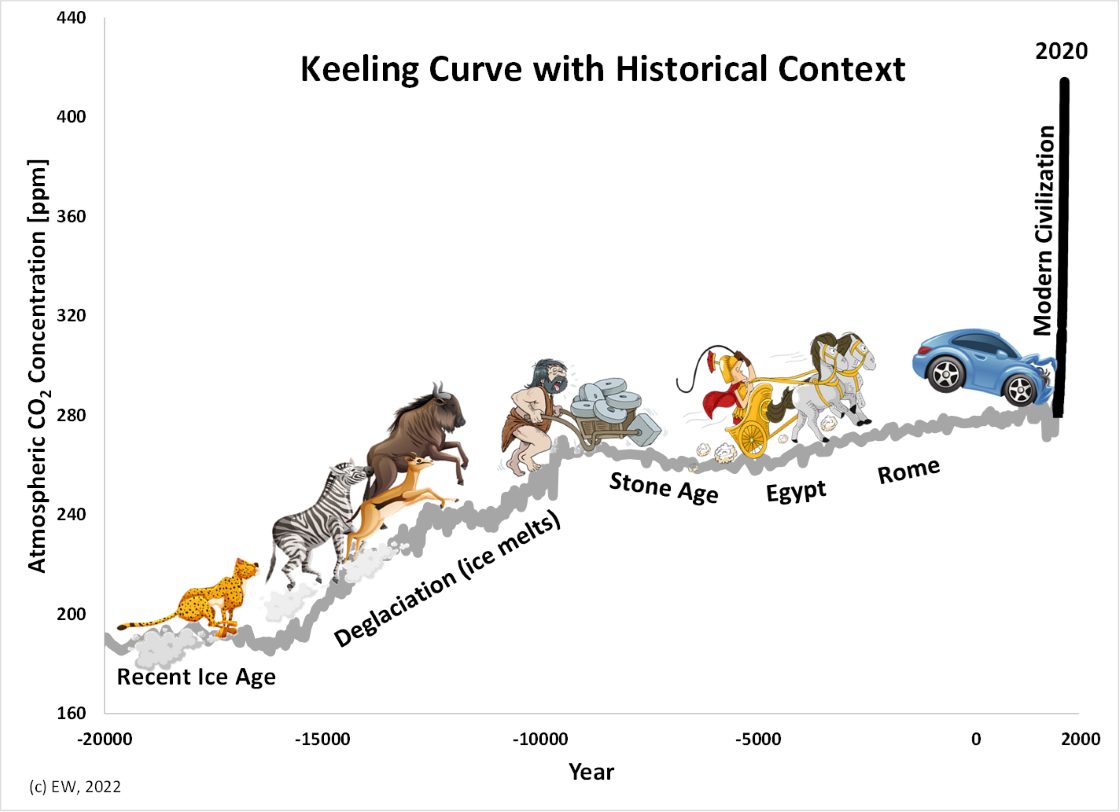
This is an updated version of Analogy 1, which illustrates the impact of the rate of increase of CO2 on the natural world's ability to adapt. The original version is here.
Speed Kills
Deceleration from 60 mph to 0 in …
Increasing atmospheric CO2 concentrations cause global warming. Global warming drives climate change. The rate of increase of CO2 concentration is important, because it determines the rate of global warming, and therefore the rate at which natural systems must adapt. Figure 1 shows CO2 concentrations from the end of the recent ice age to the present. Think of Fig. 1 as the Keeling Curve with historical context, illustrating how rapidly CO2 is rising relative to the most recent deglaciation rate. If we limit the rate of increase of CO2 to that experienced during a deglaciation cycle, we expect nature will adapt; the further away we move from this base rate the more difficult it is for nature to adapt, because rapid rises of temperature are often associated with extinction events.

Figure 1. Rate of increase of CO2 relative to the rate during the recent deglaciation. The animals running up the CO2 "hill" indicate that nature can adapt to this rate of change. A stable CO2 level provided a relatively stable climatic base for the development of modern civilization. Can modern civilization surmount the CO2 cliff in front of us? (Clipart licensed from iStock/skalapendra (car), iStock/blueringmedia (herd), Getty Images/zaricm (caveman), and 123RF/Lorelyn Medina (chariot))
Is it a coincidence that during the rise of modern civilization that CO2 concentrations have been remarkably stable?
Although the natural world has successfully navigated many deglaciation cycles, will the natural world successfully adapt to the current rate of change?
Will modern civilization successfully adapt to the deglaciation cycle we are forcing?
Posted by Evan on Tuesday, 25 January, 2022
 |
The Skeptical Science website by Skeptical Science is licensed under a Creative Commons Attribution 3.0 Unported License. |